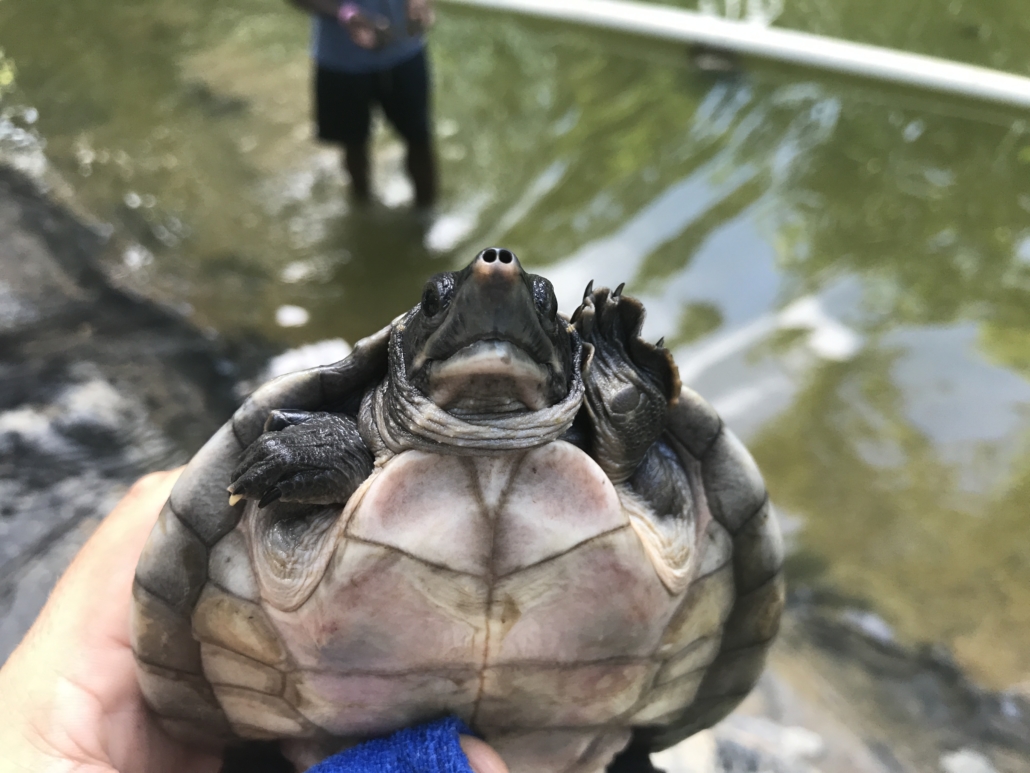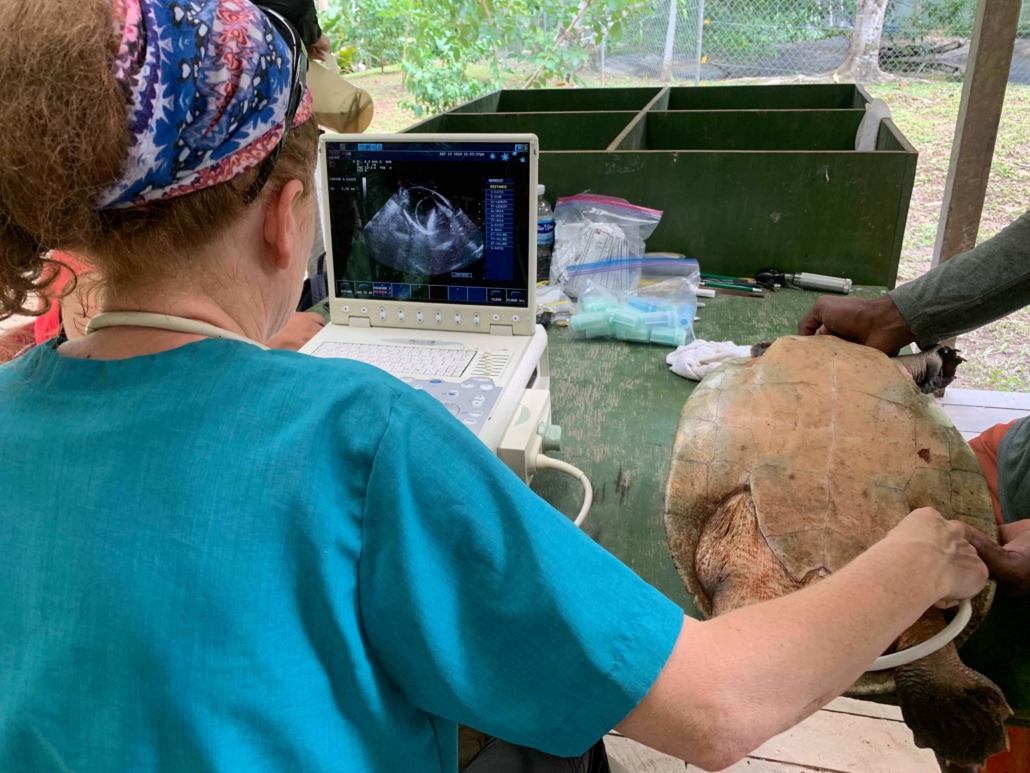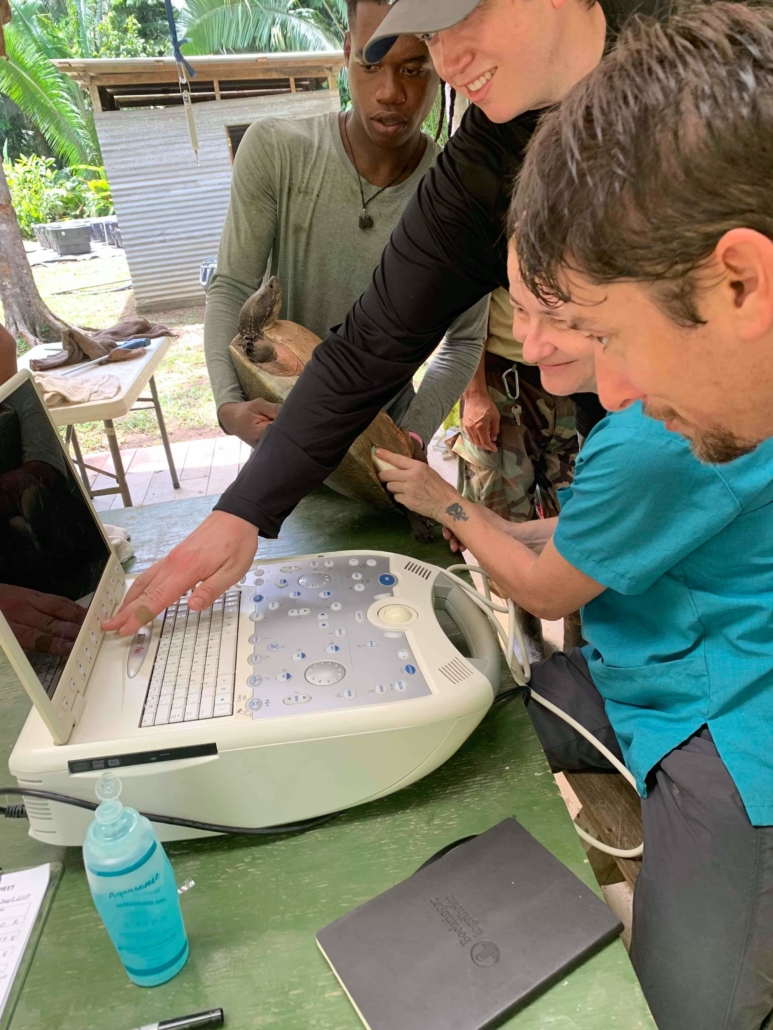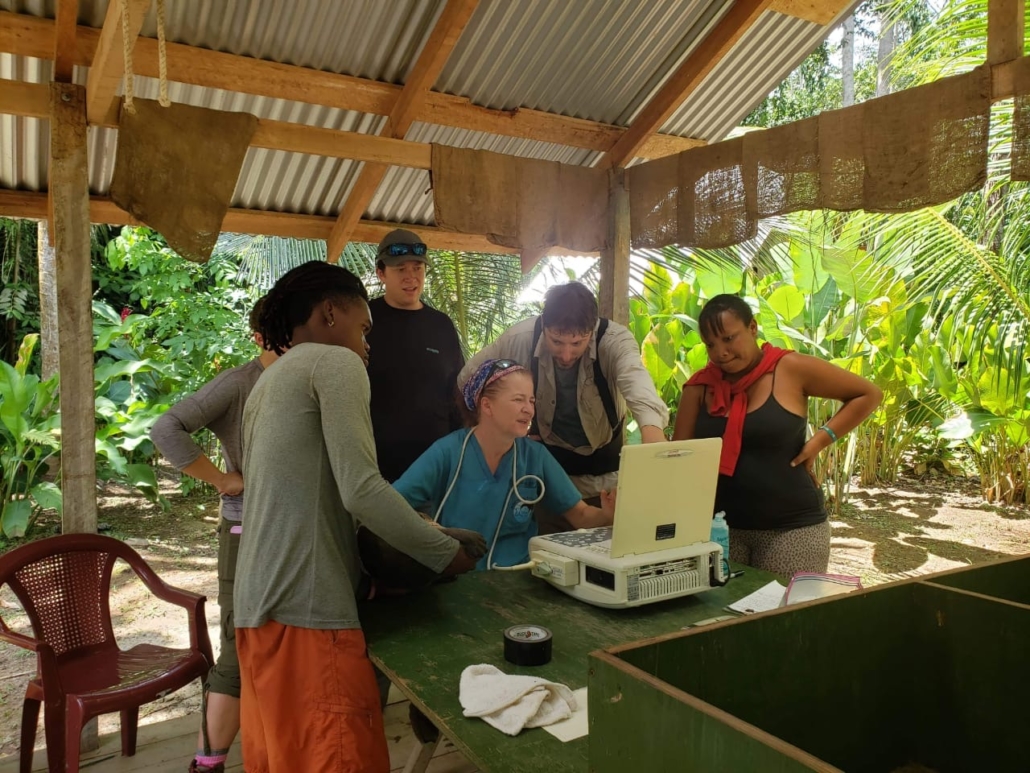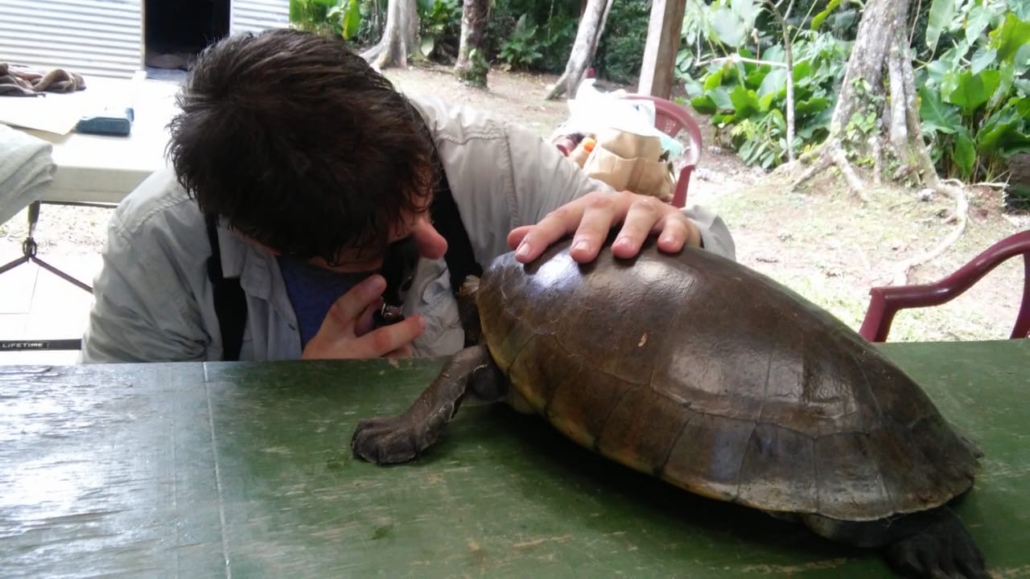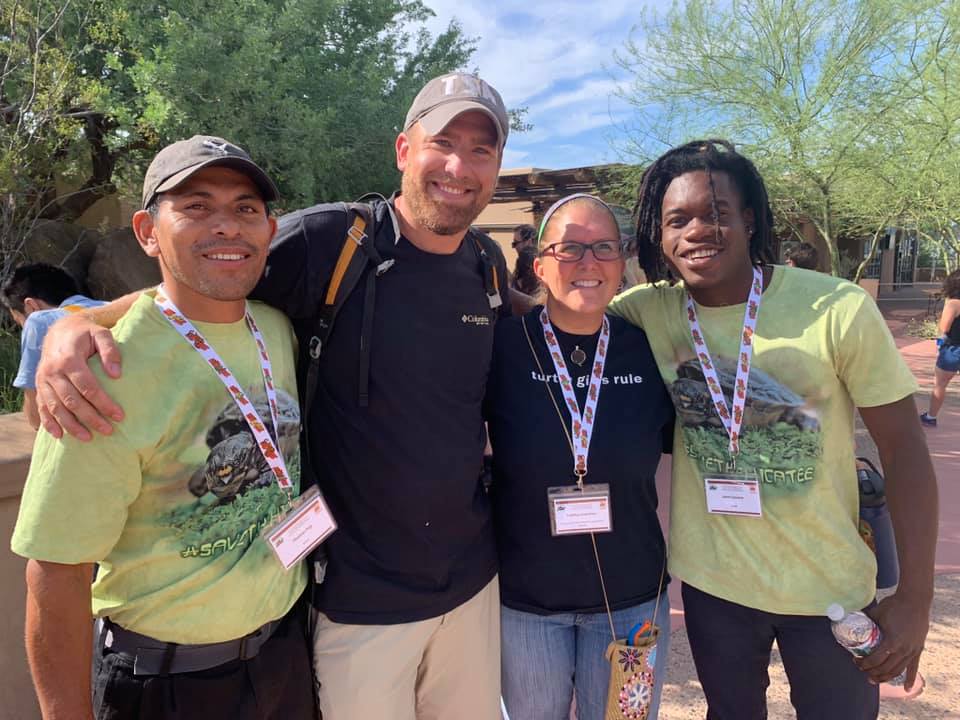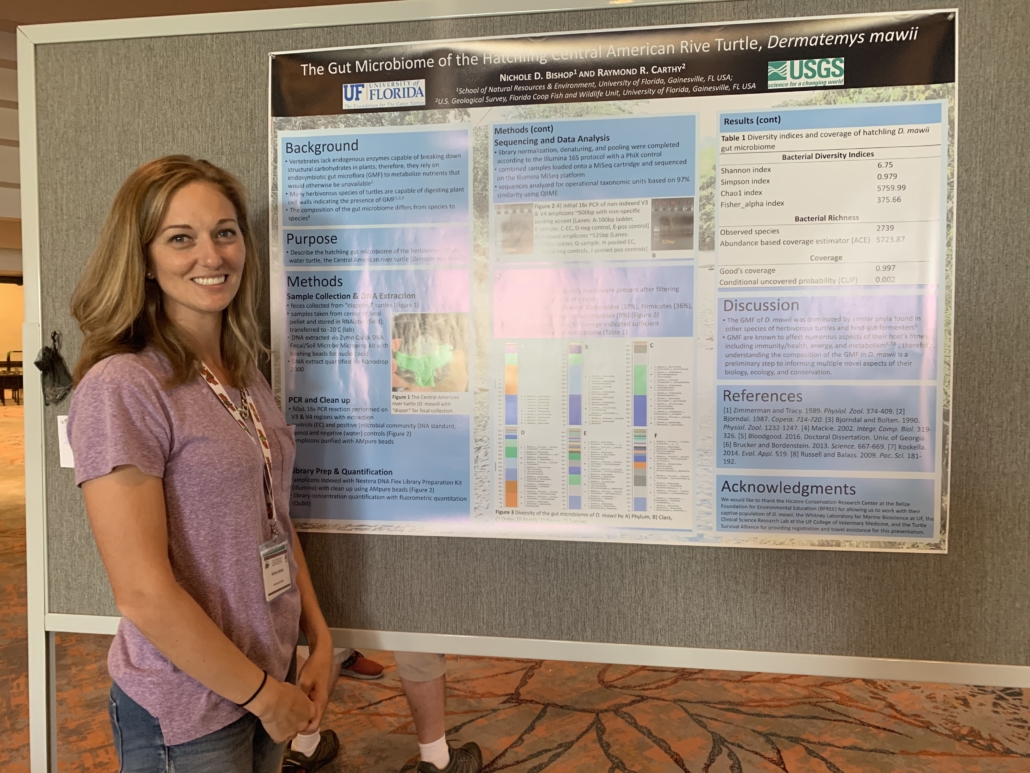2019 Fall Hicatee Health Assessment
Biannual health assessments continue to serve two important purposes. 1) They allow us to check the
general and reproductive health of all captive animals, and 2) they enable us to continue to gather
growth data which is added to our long-term dataset on the species.
Understanding whether or not our turtles and their environment are healthy is critical to the success of
the work at the HCRC. Therefore, we bring in veterinarians who specialize in reptiles and can address
immediate needs like injury or infection, as well as help diagnose other chronic issues that have to be
dealt with appropriately over the long-term. The veterinarians look for signs of aggression and check the
reproductive health of mature females and males to ensure that the conditions in this captive
environment are optimal for a productive breeding population of turtles. They also look for signs of
malnutrition and overcrowding in our captive born turtles. Because these animals are completely
herbivorous and they generally haven’t been raised successfully in captivity over long periods of time,
we have lots of questions about ensuring that their diet is enough for them.
Creating a long-term dataset on this population helps ensure that others working with the species can
benefit from the knowledge we have gained. Earlier this year, we published our first scientific note
describing the physical characteristics including size and weight of our captive-born population using
data collected immediately after hatching. Although the species dates back to the dinosaurs, this
information had not been collected or published prior to our note. In fact, there is very little information
published on Hicatee turtles, making these assessments an ideal time for visiting researchers to collect
other data in addition to growth metrics.
Our health assessments also benefit the humans who participate by creating opportunities for students,
scientists, zookeepers and veterinarians to expand their skills to the field and allowing them to work
with a rare and unique species – one which most people never have access to.
During this fall’s health assessment, we were once again lucky to bring together a great team and we
achieved all of our goals. The adult and subadults continue to be healthy and growing, and the same is
true for the captive-born turtles who are adjusting to their new home in the recently completed rearing
pond. A few of the youngest turtles were identified as not thriving so they traveled with Dr. Isabelle back
to the Belize Wildlife and Referral Clinic in Cayo to remain under her care until they are a bit stronger.
This year’s veterinarian team was comprised of Dr. Shane Boylan, lead veterinarian from the South Carolina Aquarium, Dr. Isabelle Paquet-Durand, BWRC, and Dr. Sean Perry, DVM, is a PhD candidate specializing in reptiles at Louisiana State University School of Veterinary Medicine. We are grateful to the Turtle Survival Alliance for their funding of the fall health assessment.
GUEST BLOG BY 2019 FALL HEALTH ASSESSMENT VOLUNTEER
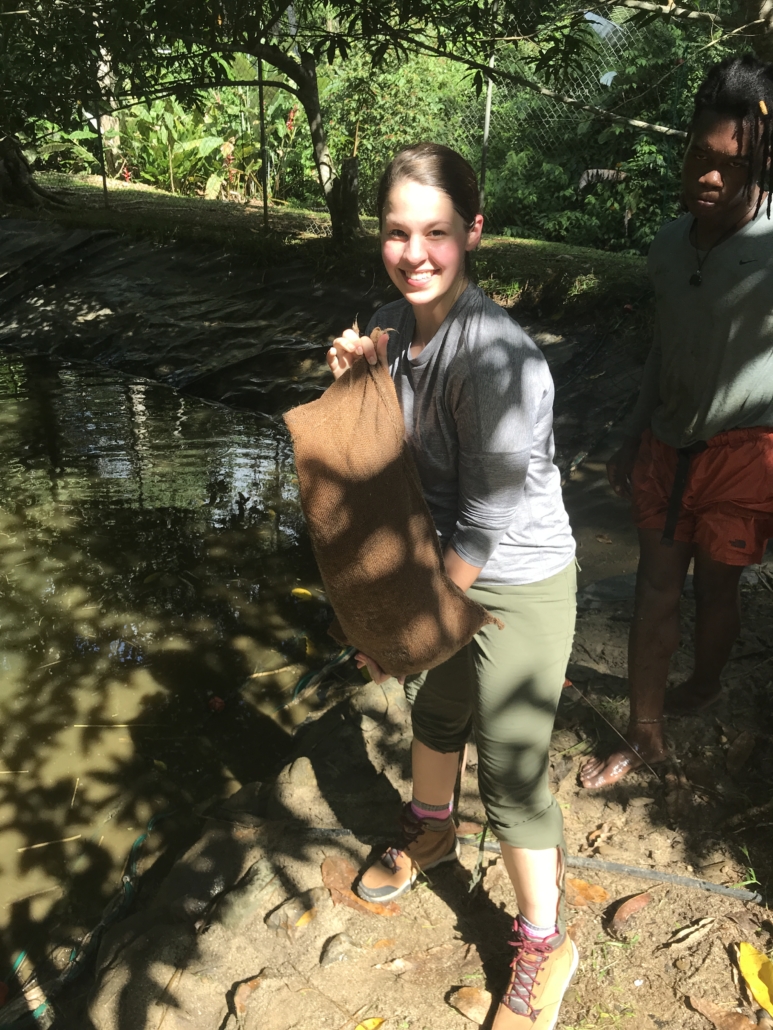
My name is Stevie Cisek. I am currently a Wildlife Educator at Ohio Wildlife Center, which is a non profit organization that is dedicated to fostering awareness and appreciation of Ohio’s native wildlife through rehabilitation, education and wildlife health studies. Prior to being an educator, I attended Otterbein University where I graduated with a degree in Zoo and Conservation Science. During my time as an Otterbein student I had the opportunity to travel to Belize to attend a field course at BFREE. This was where I first learned about the Hicatee and the conservation efforts being done by the TSA and BFREE to save this critically endangered species. It was at this time that I learned that the HCRC was the only facility of its kind in Belize. The research being done there is providing vital knowledge about the behavior and biology of the Hicatee turtle, which little is known about. The information gained via these efforts will then be used to help make informed strategies and actions to help preserve this amazing species. I had the opportunity to return to BFREE for my second time to help with the fall health assessments. I was excited to learn that their breeding program had been so successful in the last year. They now have so many hatchlings that they will begin working on the next phase of their conservation efforts. The reintroduction of individuals back into the areas where the Hicatee populations have either declined or have been extirpated from. With overharvesting for human consumption being the Hicatees greatest threat the team knows that during this phase, education is going to be critical.

